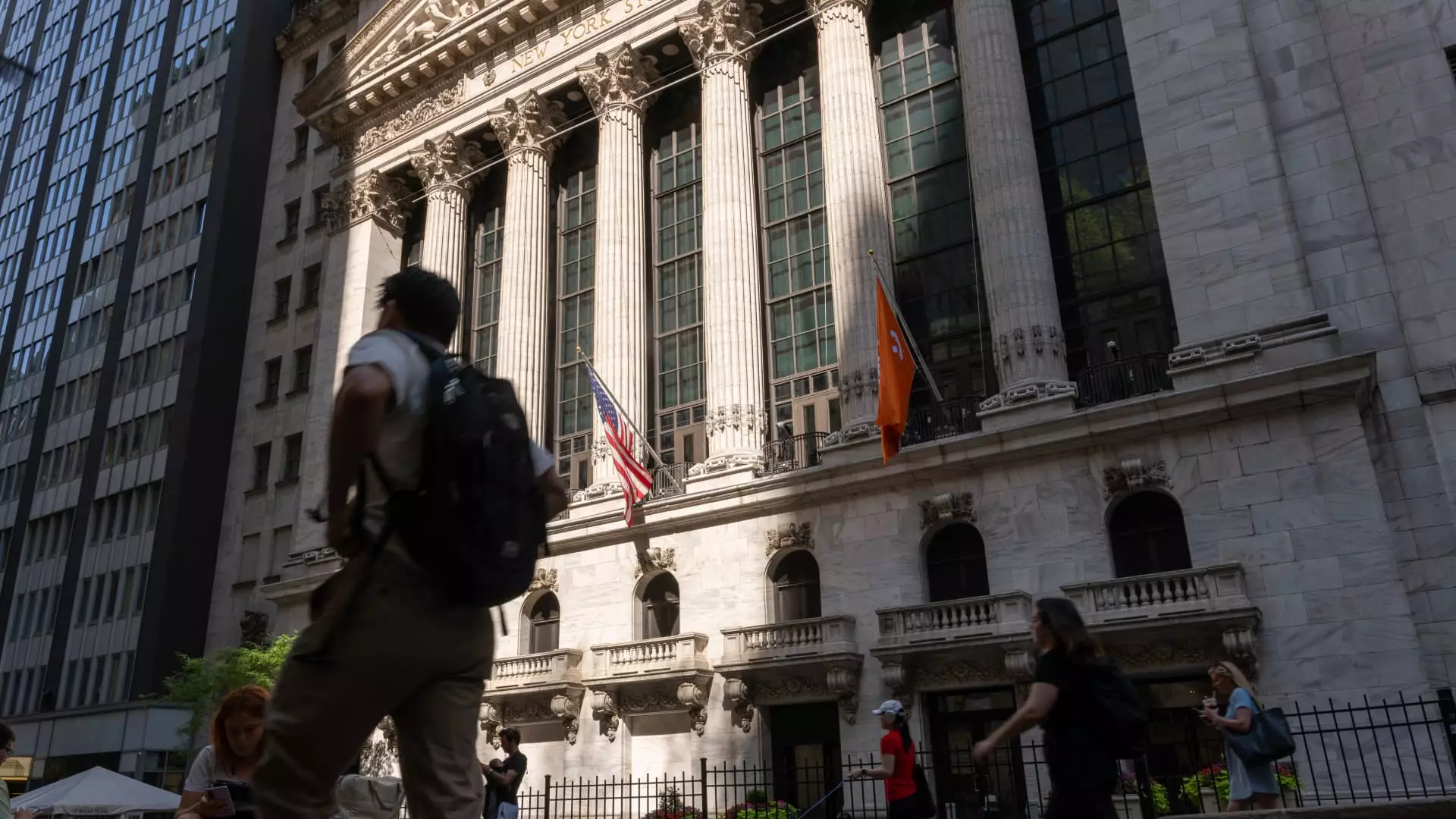The landscape of mergers and acquisitions (M&A) has recently witnessed a seismic shift, thanks largely to the Trump administration’s contentious tariff policies. What began as a buoyant start to the year has been jolted by an unexpected policy change that sent ripples through the markets, causing a palpable freeze in dealmaking. Tariffs initially inspired trepidation among investors, leading to a sharp decline in activity that dashed hopes for a robust M&A renaissance. Companies had hoped to benefit from an environment characterized by pro-business initiatives and a favorable regulatory climate, yet the reality of abrupt policy oscillations thrust the market into uncertainty.
Despite this turbulence, a remarkable endurance is emerging within the M&A sector. The anticipation of a rebound is not misplaced, as recent indicators suggest a swift recovery in appetite for dealmaking. Analysts are cautiously optimistic, indicating that while the tariffs may have cast a long shadow, the willingness to engage in corporate mergers and takeovers remains intact. This resilience speaks volumes about the underlying tenacity of the market.
Market Recovery: Signs of Life Amidst the Chaos
Recent statistics embody a revitalized interest in M&A activity, as evidenced by a significant resurgence in US deal value. In March alone, the total value of transactions leaped past $227 billion. However, an alarming slowdown in April illustrated the erratic nature of the market, which saw a staggering decline of 66% week-on-week in the face of Trump’s lofty tariff announcements.
Yet, the winds of change appear to be blowing favorably once again as economic variables align more positively. The average size of deals is increasing, hinting that not only is there a recovery underway, but it may well be aided by broader economic stability. The anticipation of lower borrowing costs and the subsequent easing of financial burdens on companies are forging a fertile ground for M&A growth. As Kevin Ketcham of Mergermarket points out, clarity in trade policy and a recovering equities market are setting the stage for a slew of deals, even in notoriously hard-hit sectors.
Commodities and Tactics: The Shifting Nature of Deal Making
With the market teetering on the edge of either boom or bust, there are informed predictions about the nature of future M&A transactions. Charles Corpening of West Lane Partners emphasizes a likely lean toward special situations in M&A. This involves strategies that adapt to shifting market conditions, allowing flexibility in deals to accommodate motivated sellers. Such shifts may push smaller transactions to the forefront, driven by less stringent regulatory gaze and a more manageable level of financial complexity.
The tactical pivoting to consider smaller-scale deals embodies a broader trend of adaptation seen across various industries. Companies, rather than shying away from M&A altogether, are recalibrating strategies to align with current economic realities. This mindset dovetails seamlessly with the pressures younger firms face in a competitive market, particularly as traditional giants feel increasing competition from nimble startup ecosystems.
Major Deals: A Testament to Revival
Several high-stakes transactions over the recent months serve to underscore the M&A landscape’s promise, from tech to telecommunications. Noteworthy examples include Constellation Energy’s sizable $16.4 billion acquisition of Calpine, or Google’s ambitious $32 billion agreement earlier this year. These landmark transactions, while significant in size and complexity, also highlight an unyielding confidence among major players to expand and adapt even when conditions seem less than favorable.
Moreover, more tailored approaches are being adopted, as seen in Kraft Heinz’s strategic deliberations to either divest or acquire based on slower growth projections in certain brand segments. Such readiness to innovate rather than withdraw speaks to an agglomeration of resilience within the consumer sector, where companies are prioritizing agility and foresight over stagnation.
Anticipating the Future Landscape of M&A
The current M&A environment is characterized by a duality of anticipation and caution. There’s recognition of the potential pitfalls such as rising bond yields and fluctuating asset prices, yet optimism persists. Moving forward, we can expect to see greater diversification in deal categories, informed by the lessons learned during these turbulent times.
The question that remains is whether M&A can recapture the sheer momentum that previously characterized its trajectory, or if it will settle into a new normal where flexibility and strategic maneuvering are paramount. The data points towards a budding revival, but only time will unveil the durability of these newly formed strategies in the ever-evolving backdrop of economic pressures and competitive landscapes.

